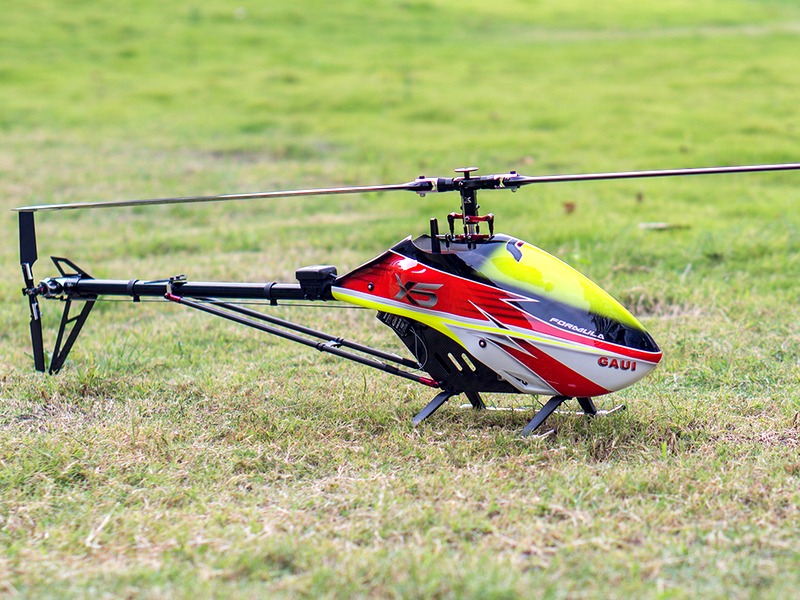Can a helicopter fly without a pilot?

The short answer is yes, a helicopter can fly without a pilot. In fact, there have been numerous successful demonstrations of autonomous helicopter flight over the past few decades. Autonomous helicopter flight uses a combination of sophisticated on-board sensors, computers and algorithms to allow a helicopter to fly without the need for a human operator.
Autonomous helicopters are becoming increasingly attractive for a variety of applications, ranging from search and rescue to aerial photography to cargo delivery. Autonomous helicopters offer the potential for tremendous cost savings for a variety of operations since they don't require a human pilot and their operation costs can be drastically reduced.
The basic concept of autonomous flight is relatively simple: an on-board computer system, equipped with a variety of sensors and other electronics, is programmed to automatically control the aircraft. The computer system processes data from the on-board sensors to determine the helicopter's position and orientation in relation to the ground. It is then able to make the appropriate calculations to maneuver the helicopter and keep it flying safely.
The autonomous flight system first needs to be "trained" in order to properly respond to a variety of external factors, such as wind and turbulence. This is accomplished by developing a detailed map of the area that the autonomous helicopter is to fly in, as well as providing the computer with precise information about the helicopter's parameters and performance characteristics.
Once the autonomous helicopter flight system is properly trained, it is ready to fly without the need for a human operator. In ideal conditions, the autonomous helicopter will be able to fly safely and efficiently without the need for any human intervention. If the flight conditions become too difficult for the system to handle, it can switch to a "safety mode" that will allow a human pilot to take control of the helicopter.
In conclusion, a helicopter can fly without a pilot, provided that it is equipped with the proper autonomous flight system. Autonomous helicopters offer the potential for tremendous cost savings, as well as increased safety and efficiency in a variety of different operations. Autonomous helicopter flight has already been demonstrated successfully, and its use is only expected to increase in the future.
Comments / Question
2. Aerial Photography & Videography – Pilotless helicopters can capture stunning aerial images and videos with minimal crew.
3. Firefighting – Pilotless helicopters are useful in fighting fires from the air, either dousing flames with water or using infrared technology to monitor temperatures and plan firebreaks.
4. Monitoring & Surveillance – Pilotless helicopters can be used for surveillance purposes, be it for border control, property monitoring, or monitoring vehicle traffic.
5. Transport – Pilotless helicopters could one day be used for transport purposes, such as delivery of goods and people to remote locations.
6. Precision Crop Spraying – Pilotless helicopters are being used to spray fertilizers and pesticides on crops with precision, ensuring greater efficiency and less wastage.
7. Space Debris Tracking – Pilotless helicopters can be used to track and monitor space debris, helping to avoid collisions with space ships and other objects in outer space.
2. Control system complexity: Autonomous helicopters require complex control systems to monitor and direct their movements. This includes sensors, processors, and actuators to interpret data and determine appropriate actions.
3. High maintenance costs: Autonomous helicopters require frequent maintenance and inspections due to the complexity of their systems. This increases the cost of operation and limits their practicality in some applications.
4. Unpredictable weather: Autonomous helicopters are subject to the same weather conditions as their human counterparts. This can create unpredictable and dangerous flight conditions, which can cause the aircraft to lose control or suffer mechanical failure.
1. Autopilot technology should be used to ensure that the helicopter is properly guided and follows the correct flightpath.
2. The navigation system should be designed with multiple redundancies to ensure that the helicopter’s intended route is always followed.
3. The system should be designed so that it can detect and avoid obstacles, including other aircraft and people on the ground.
4. Emergency systems should be in place to allow the pilotless helicopter to be remotely grounded in the event of an emergency.
5. The helicopter should be equipped with sensors and cameras to provide the operator with real-time information on the helicopter’s environment.
6. Security systems should be in place to ensure that the helicopter is not hacked or controlled by unauthorized individuals.
7. Flight testing should be conducted prior to deployment to ensure that the helicopter is reliable and safe for passengers.
2. Flight Control System: This system is responsible for controlling the aircraft's attitude, which includes the roll, pitch, and yaw.
3. Navigation System: This system is responsible for providing the aircraft with information about its position, as well as its surrounding environment.
4. Sensors: These are necessary for the aircraft to perceive its environment and make decisions. These sensors could include radar, sonar, lidar, cameras, and infrared.
5. Flight Computers: The flight computers are responsible for processing the data from the sensors and the autopilot system, in order to make decisions about how to control the aircraft.
6. Communication System: This system is necessary for the aircraft to communicate with its operators on the ground and other aircraft in the vicinity.

